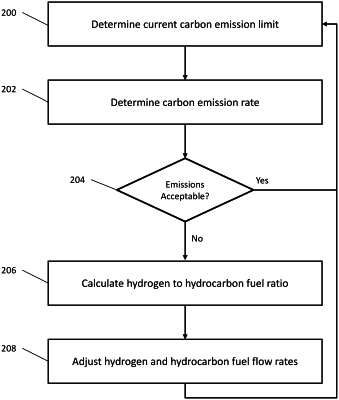| CPC B63H 21/20 (2013.01) [F02B 43/10 (2013.01); F02D 19/0644 (2013.01); F02D 19/0647 (2013.01); F02M 25/12 (2013.01); B63H 2021/202 (2013.01); F02B 2043/103 (2013.01); F02B 2043/106 (2013.01)] | 16 Claims |

|
1. A method of operating a vessel, comprising:
determining a carbon emission limit applicable to the vessel based on a present location of the vessel;
determining a power demand magnitude of an electrical load applied to a power generator disposed on the vessel;
calculating a hydrogen to hydrocarbon ratio based on the carbon emission limit and the power demand magnitude of the electrical load;
forming a fuel mixture by adding hydrogen to a hydrocarbon fuel, such that the fuel mixture has the calculated hydrogen to hydrocarbon ratio;
providing the fuel mixture to the power generator; and
providing power from the power generator to the electrical load.
|